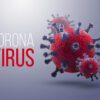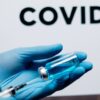We are living in a unique time when doctors are facing a deadly virus with no known cure. Coronavirus is a “novel” virus, meaning it’s new. When it showed up in Wuhan, China, it had never existed before. Because it’s different from all other viruses humans have had, we don’t yet have a cure or a treatment for it. The drugs we have for other viruses are not effective on COVID-19.
Therefore the treatment for every patient is experimental. If you or a loved one is sick with COVID-19, you may be given the option of participating in a clinical trial. How do you decide between joining a study versus having your doctor use his or her best guess based on the limited information available? Understanding what clinical trials are may help.
A hundred or more clinical trials are underway testing a variety of drugs for coronavirus. But what’s up with clinical trials? What makes them so important? Since we don’t know what does work, why not use everything? If someone is critically ill, what do you have to lose by taking a medicine that might work?
A clinical trial is the last step in an examination to ensure that a drug is both safe and effective. The purpose of a clinical trial is to determine if Drug A is a better drug than Drug B. “Better” could mean more patients recover or recover more quickly, or get well with fewer side effects or adverse events.
How is a drug tested before clinical trials?
Clinical trials are called “Phase 3 trials” and are the last stage of testing before the information is presented to the FDA for approval. A new drug has to pass a variety of testing in labs and on animals before it can be tested on humans.
Phase 1 is the first test on humans and it makes sure the drug is safe. Phase 1 is a small trial where 20 to 100 healthy people take the drug in several dosage strengths to make sure there aren’t immediate terrible unforeseen side effects. (This phase cannot determine long-term benefits or harms). 70% of drugs pass Phase 1.
The next step (Phase 2) is for efficacy, does it work? The drug is tested in several hundred people with the disease/condition it is supposed to treat. This can last for months or even years depending on how long the drug is expected to be taken and the risks of harm to the patients. Only about 33% of drugs pass this test, most of the drugs don’t work, have very uncomfortable side effects or don’t work well enough to market them.
Drugs that have already been approved for a disease or condition and are applying to be approved for another indication can often jump Phases 1 and 2 going straight to Phase 3, the Clinical Trial. This is why scientists are focusing on existing drugs – they can skip several years of Phase 1 and 2 trials.
Phase 3 consists of clinical trials where the drug is tested to see if it is safe and effective in the population it targets – in our case, COVID-19 patients.
What makes a good clinical trial
- Drug A is either a new medicine or one that the FDA has approved for one use and the pharmaceutical company wants to get it approved for an additional, different use. No drug has been approved by the FDA or any other country as a treatment for COVID-19. However nearly all the drugs being tested for COVID-19 have been approved by the FDA previously for some other use.
- The patients taking Drug B are the “control arm.” They are given a placebo or the drug that is usually prescribed for that illness.
- The patients in each group should be at the same stage of illness and have similar demographics in age, male-female ratio, etc.
- Neither the doctors nor the patients know who is getting Drug A and who is getting Drug B.
In normal times the FDA would expect there to be a minimum of 300 – 3,000 people in a Phase 3 trial that would last from one to four years in order to assess if a drug is safe and effective in the population the drug is supposed to treat. This is important: Only 25-30% of new drugs tested at this stage out-perform Drug B.
Rule 1: Before joining a clinical trial, make sure it’s got all four steps
In designing and running a clinical trial all four steps are important because then the results can be relied upon. When all four steps are included it’s called a double-blind, placebo-controlled trial. It’s the gold standard of studies. In normal times (non-coronavirus times) a study without a control arm would generally be considered worthless (There are certainly exceptions, but I don’t know of any).
As of today, virtually all the clinical trials that have been completed and published on drugs used to treat COVID-19 have no control arm. They also have very few people in trials that last just a few weeks.
See three top doctor’s opinions on clinical trials – Three Top Doctor’s Opinions On Coronavirus Clinical Trials.
Are the clinical trials conducted so far useless?
As of today, virtually all the clinical trials that have been completed and published on drugs used to treat COVID-19 have no control arm. They also have very few people in trials that last just a few weeks.
Instead of producing facts — such as the survival rate on Drug A was 14% higher than those who got Drug B or 22% more people lived using Drug A than Drug B but Drug A damaged their eyes permanently and so forth — these studies with no control arm can only tell how many people lived or died using Drug A. Did that mean Drug A was a better choice than Drug B? There is no way to know from that data.
Should you join a clinical trial if you have COVID-19?
If you join a clinical trial that doesn’t have a control group, the results won’t be conclusive and may not further medical knowledge. However, you will get access to medicine and you will be watched closely by the doctors.
If you join a clinical trial that has a control arm, you have a 50-50 chance of getting Drug A versus Drug B. Remember that Drug B might be a placebo (no medicine) or another medicine approved for some other disease.
Some studies are being set up that compare three or even four different drugs. By comparing four at once the doctors would get good comparative information.
Why would I join a clinical trial and risk not getting medicine?
Simply because a drug is being tested doesn’t make it the better drug. Remember: Only 25-30% of new drugs tested in Clinical Trials out-perform Drug B.
So what if a drug doesn’t work, what do I have to lose?
You have a lot to lose. All drugs have side effects and some are devastating.
Hydroxychloroquine can cause permanent eye damage, cardiac effects like cardiomyopathy with a risk for heart failure and heart rhythm abnormalities, severe hypoglycemia, and muscle atrophy. It can also cause suicidal behavior.
Remdesivir is being widely tested and used, but the FDA has never approved it for any use and it’s only used experimentally. Therefore we don’t have a lot of information on side effects. Michael Klepser, PharmD, FCCP, a professor at Ferris State University’s College of Pharmacy is concerned with kidney damage. “One concerning bit about it is it does have a solubilizing agent in it called sulfobutylether-beta-cyclodextrin (SBECD). We’ve seen that solubilizer used with other medications and sometimes in patients with renal dysfunction, it can cause some problems because (the SBECD) can accumulate and cause kidney damage. That would be the major thing to keep an eye on.”
See MedShadow’s Do We Already Have the Treatment for COVID-19? for more on the side effects of several of the drugs being tested.
Joining or declining a clinical trial is a personal choice. There are risks and benefits to either path. Here are what three top doctors say.
Hear from 3 top doctors about possible coronavirus treatments and clinical trials – Three Top Doctor’s Opinions On Coronavirus Clinical Trials.






